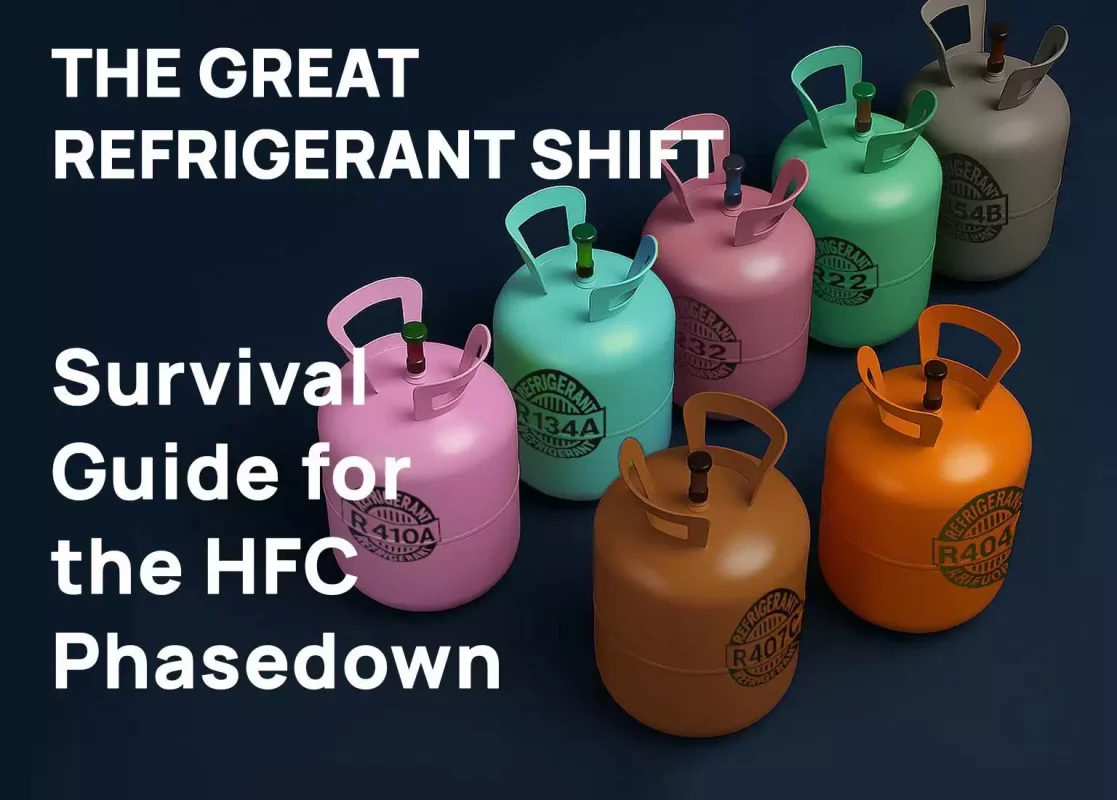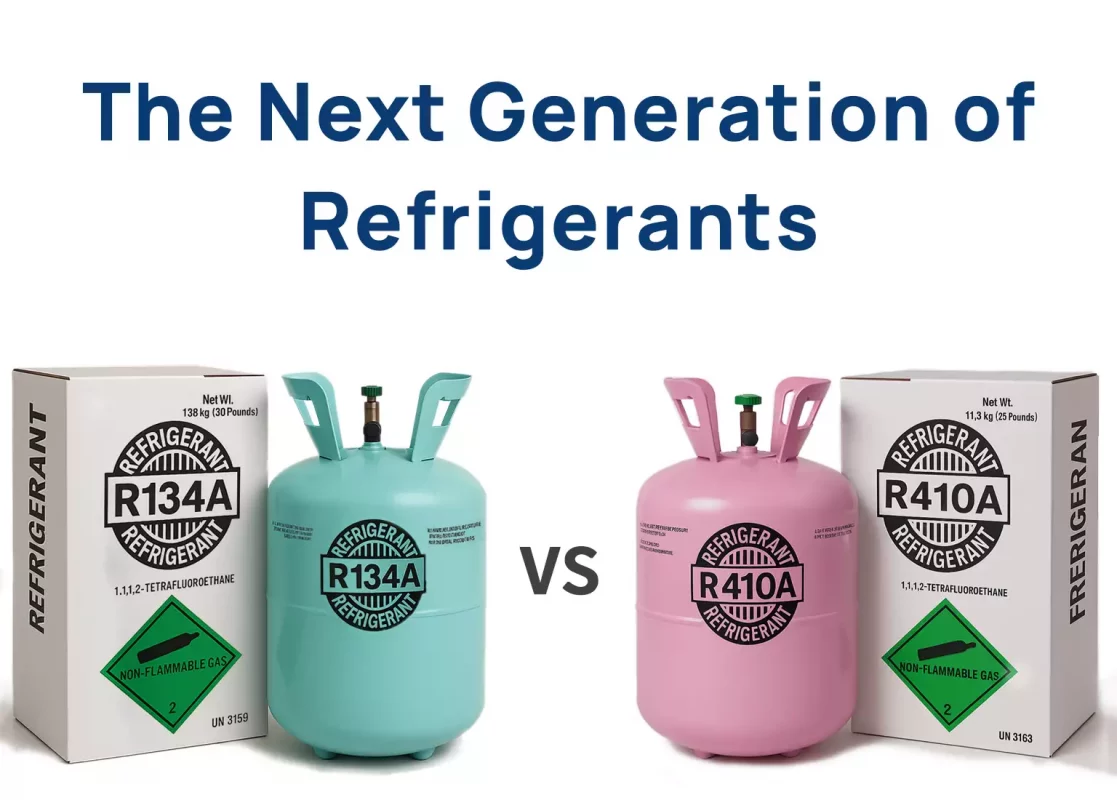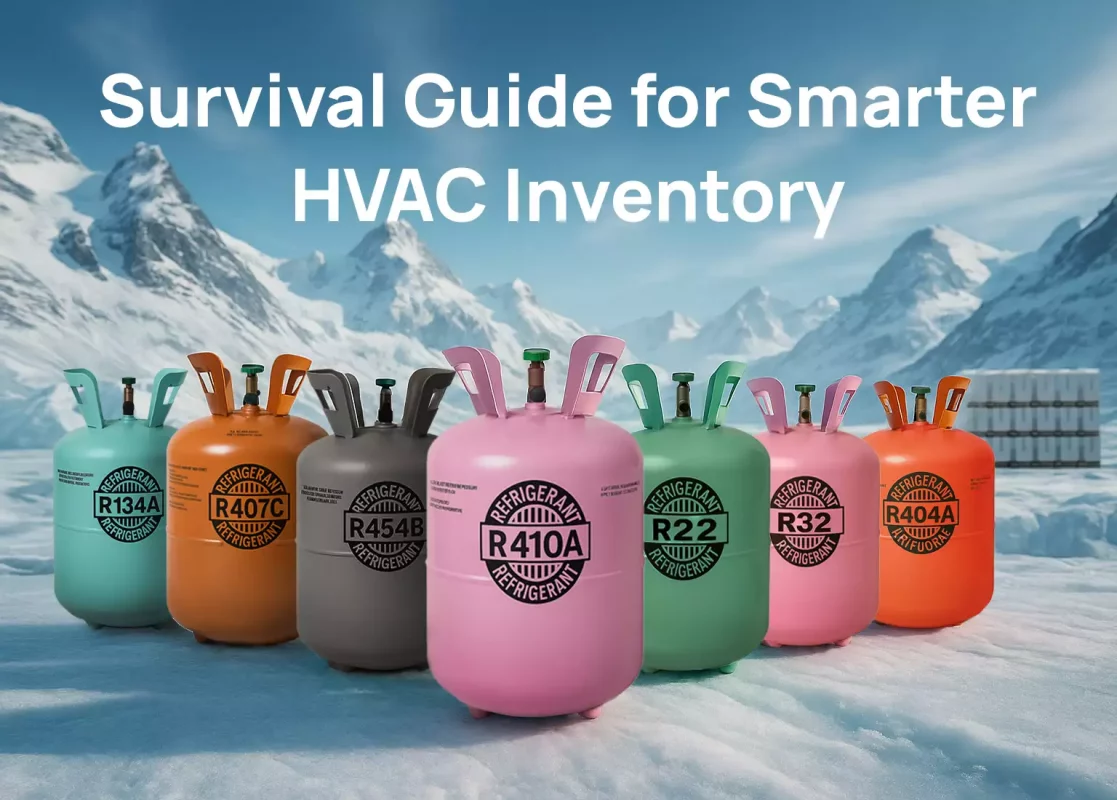Get Ready for the Big Refrigerant Change
Starting January 1, 2025, the EPA is phasing out common refrigerants R-410A (used in home AC) and R-134a (used in fridges and cars). New climate laws (AIM Act) mean making or importing them for new equipment drops sharply now, with full bans coming. This is a major shift for your business. These old refrigerants have a very high “Global Warming Potential” (GWP), meaning they harm the climate when leaked. The law requires new refrigerants with much lower GWP (under 700).
Meet the New Refrigerants
For home central AC systems, R-454B (like Opteon™ XL41) is the main replacement. It has a 78% lower GWP than R-410A and works at similar pressures, meaning less retraining. However, it requires leak detectors in tight spaces because it’s mildly flammable (A2L class). A smart tip is to use “convertible” coils (e.g., Lennox -01 models) that can easily switch from R-410A to R-454B. For ductless mini-splits, R-32 is the leader. It can be 30% more efficient, is easier to recycle, and has a GWP of 675 (under the limit). It is also mildly flammable (A2L).
Commercial refrigeration needs different solutions. R-516A is good for replacing old R-134a chillers. CO₂ (R-744) (GWP=1) is surging in supermarkets but needs special systems. Propane (R-290) (GWP=3) is great for small coolers like reach-ins and is very efficient, but it’s highly flammable (A3 class) with strict charge limits (≤150g). R-1233zd (GWP=1) is a good non-flammable option for old chillers. For cars, especially EVs, R-1234yf (GWP<1) is the current R-134a replacement, and R-474A is a new option offering better heating in very cold weather.
Crucial Safety First
Working with many new refrigerants (like R-454B, R-32, R-290) demands extra care because they are flammable (A2L or A3 class). You absolutely need: Leak-tight work and good ventilation. No-torch tools (use braze-free connectors) are mandatory for R-290 and R-32. You also need calibrated flammable gas detectors, as danger starts at just 4.4% concentration in the air.
Your Action Plan: 4 Key Steps
- Get the Right Tools (By Late 2024): Ditch old gauges. Get A2L-compatible tools (look for the UL 60335-2-40 safety mark) and buy braze-free connectors.
- Get Trained Immediately: Update your EPA 608 certification. Take free manufacturer courses (e.g., Daikin for R-32, Lennox Pros, Copeland) and learn new leak-check methods for flammable refrigerants.
- Update Your Business: Phase out old R-410A & R-134a stock and include the cost of new tools, training, and refrigerants in your 2025 quotes.
- Talk to Customers Early: Explain clearly: “After 2025, you CANNOT install a brand-new R-410A system unless both indoor and outdoor units were made before 2025.” Promote “future-ready” systems designed for the new refrigerants (e.g., Lennox Quantum™ coils).
Lead This Change, Don’t Just Follow
This shift isn’t just about following rules. It’s a huge opportunity ($17 Billion!) for contractors who get ahead. By 2026, over 80% of new systems will likely use R-454B, CO₂, or R-32. Start today: Check the EPA’s HFC Phasedown Hub for local rules, sign up for manufacturer training, and upgrade your tools. Don’t just keep up – lead the way and grow your business.



